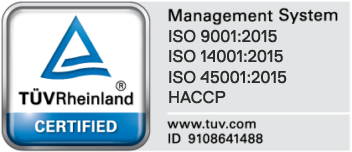E-liquid industry is growing as well as vaping’s popularity. What does this phenomenon consist of? Let’s take a closer look at e-liquids. What an e-liquid is? What substances they do contain? Why are nicotine vapors so much better for your health than regular cigarette smoke? It is only a few questions we answer in this article.
E-Liquid: a bit of history
Electronic cigarette was born in the 1960’s thanks to Herbert A. Gilbert. He patented a device that actually was a smokeless, tobacco-less cigarette. It worked by heating a nicotine solution and producing nicotine vapors that could be then inhaled to ingest nicotine.
The invention did not catch on until 40 years later. Chinese chemist, Hon Lik proposed using an ultrasound-emitting element to heat and vaporize a liquid containing nicotine. He was also the one to start using Propylene Glycol to dilute the nicotine solution.
Since the first e-cigarette was sold, both e-cigarettes and e- liquids have come a long way. From simple, basic liquid heaters to complicated, customizable high-tech devices. From crude, tasteless or tobacco flavored liquids full of impurities to high quality, thoroughly tested e-liquids in as many flavors as you can think of.
See also:
- OEM Services And Private & White Label: 9 Reasons To Choose Chemnovatic As The Best Business Partner
- Nicotine: what it is and how it is classified?
- What is a nicotine base and how to use it?
- Natural vaping products: nicotine bases, nicotine salts, flavourings
- Diffirences between glycol and glycerine
What is e-liquid?
Liquid using inside an e-cigarette is called e-liquid. It is also known as e-juice or vape juice. E-liquids may contain nicotine, propylene glycol, vegetable glycerin or glycerol, as well as other chemicals (including those used to create flavours) and – in some cases – water.
Most people have common vision of e-liquid. For them e-liquid is the mixture of components that you put into your e-cigarette device to become the ‘cigarette’. It produces vapors, gives the user a nicotine kick, and adds nice smell and flavor too.
What actually goes into that „mixture”? Most e-liquids comprise three main components:
The Base is what the flavor and nicotine are dissolved in. It is a hygroscopic liquid that turns the solution into a smoke-like vapor.
Most companies use Propylene Glycol (PG), Vegetable Glycerin (VG) or a mix of the above as their bases. They are common in food and pharmaceutical industries. For example, PG is used in nebulizers and inhalers since the 1960’s. They are also harmless and safe to ingest.
Recently some manufacturers introduced the Bio Base. It is composed wholly or significantly of 100% natural agricultural ingredients – glycerin (VG) from plants and propanediol (PDO). PDO is a natural substitute of propylene glycol, but it is petroleum-free. It’s derived from natural corn sugar. It is not only 100% allergen free, but also environmentally friendly.
See more:
- 3 annoying e-liquid myths
- Pharmaceutical quality of e-liquids: what you should know?
- 5 steps to high quality nicotine bases
- What are nicotine toothpicks?
E liquid: flavors, recipes and nicotine contents
There are hundreds of various flavors. There’re not only classic tobacco or menthol flavors (e.g flavors imitating well known cigarette brands), but fruit, drink, bubble gum, or even dessert or cocktail flavors too.
You can even get your e-liquids custom-made to suit your taste.
Nicotine in low dosages (just like the one used in e- liquids) is a stimulant, in extreme doses it can be harmful. It gives you that rush every cigarette smoker craves.
E-liquids come in various nicotine contents. They’re usually ranging from 3mg/ml (or mg for short) up to 36mg/ml, but the most popular ones usually go as high as 20mg/ml which is the limit set by the upcoming EU regulations.
The higher nicotine content is responsible for that „throat hit” sensation many vapers are looking for. Usually, people starting to vape as a way of quitting smoking analog cigarettes. They start with a higher nicotine dose and gradually reduce it. There are also nicotine-free e-liquids for those wanting to quit nicotine consumption, but would like to keep vaping.
Check out more:
- How to start with own e-liquid brand?
- How to choose the perfect e-liquid base?
- E-liquid manufacturing best practices
- The best e-liquid flavors to make you recipes stand out
- PG/VG ratio: how to choose the best ratio for the e-liquid?
- Your e-liquids are not sweet enough? Add sucralose!
Health concerns regarding e-liquids
So far no conclusive research on the negative effects of e-smoking on human health have been presented. According to recent studies carried out by Public Health England, e-cigarettes are about 95% less harmful to health than regular cigarettes (full report here).
As the ingredients of each e-juice depend on the manufacturer, the manufacturing process, and the chemicals used during manufacturing. It is important to check Safety Sheets and Certificates of Quality for every product you order.
Thanks to thorough and continuous testing, you can be sure our e-liquids and all ingredients, components, or semi-finished products we supply to e-liquids manufacturers DO NOT CONTAIN Diacethyl, Acetyl Propionyl, or many other potentially harmful substances. You can check example of an e-liquid Certificate of Quality.
See also:
Let’s grow your business together!
Subscribe to our newsletter and receive a free access to our e-mail course on raw materials for e-liquids production (and more!).
No spam, only valuable content we promise to send you.















